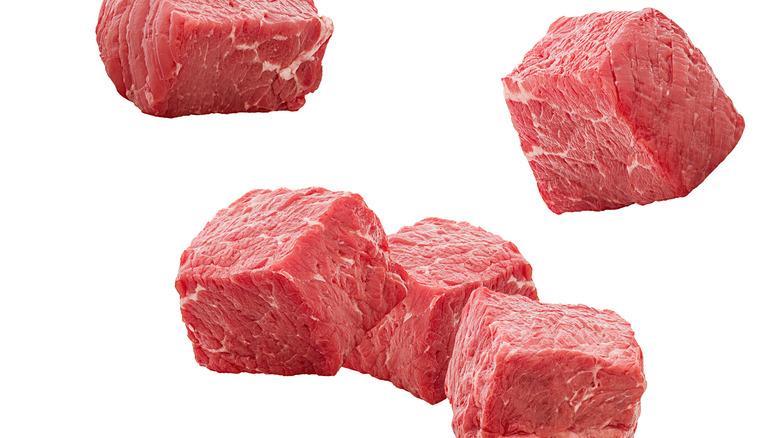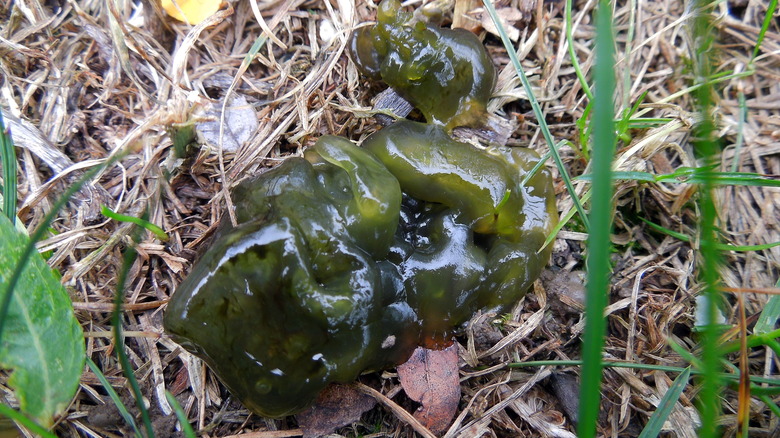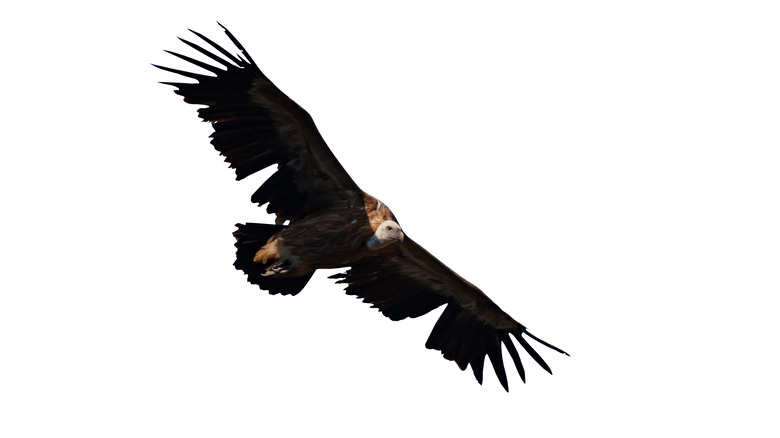The Wild Story Of The Kentucky Meat Shower
Hail, frog, locusts ... meat? Residents of Olympia Springs, Kentucky perhaps thought a whole new plague was upon them on May 3, 1876, when chunks of meat fell from the sky. Both The New York Herald and The New York Times reported on the phenomenon with the headlines "The carnal rain" and "Flesh descending in a shower," respectively. An eyewitness report from the wife of farmer Allen Crouch noted that she had been making soap on the porch when, per the Times, "The meat, which looked like beef, fell all around her. The sky was perfectly clear at the time, and she said it fell like large snowflakes." Crouch went on to call the chunks of meat "perfectly fresh."
The Times went on to note that a man named Harrison Gill "whose veracity is unquestionable" went to look at the Crouches' yard the next day and found "particles of meat sticking to the fence and scattered over the ground." Two unnamed, incredibly brave men reportedly tasted the meat and thought it to be either venison or mutton. The Herald included an interview with Mrs. Crouch from a Kentucky correspondent; she told the reporter that the meat had fallen between 11:00 a.m. and 12:00 p.m. and that it lay there until her husband and son returned from an outing, at which point they went out to look at it. Mrs. Crouch went on to say that "the hogs, chickens, cat, and dog had been eating of it freely and seemed to enjoy it well." She noticed no ill effects on the animals who ate the meat.
What really caused "the carnal rain"?
Per Scientific American, the first attempt at an explanation for the meat shower came just three months later when a man named Leopold Brandeis analyzed some of the meat that had been preserved in glycerine. As noted by writer Charles Fort in "The Book of the Damned," Brandeis told Scientific American "It has been comparatively easy to identify the substance and to fix its status. The Kentucky 'wonder' is no more or less than nostoc." Nostoc (shown above) is a type of cyanobacteria that forms colonies surrounded by a gelatinous substance that swells into a jellied mass when it rains. As its not generally visible until this swelling process occurs, people used to think that nostoc floated in the air and then fell to the ground when it rained. However, Mrs. Crouch told the The New York Herald that when the meat shower occurred "[t]he skies were clear and the sun was shining brightly. There was a light wind coming from a westerly direction." This mild weather was unlikely to result in any visible nostoc.
Blame it on the vultures
Brandeis gave some meat samples to the president of the Newark Scientific Association, Dr. A. Mead Edwards who concluded that they were "likely the lung tissue of a human infant or a horse." Eventually several scientists examined the samples and agreed that they were made up of lung and muscular tissue and animal cartilage. Scientific American calls the eventual explanation from Dr. L. D Kastenbine the most likely one of all. Kastenbine burned his sample and smelled "rancid mutton" and concluded that the meat shower was "the disgorgement of some vultures that were sailing over the spot, from their immense height, the particles were scattered by the prevailing wind over the ground." Yes, after all that, it was probably just a bunch of vultures vomiting from the sky. Both the black vulture and the turkey vulture can be found in Kentucky and both species have the terrifying habit of projectile vomiting either as a defense mechanism or to make themselves lighter in order to fly. Truly, the wonders of nature never cease.


